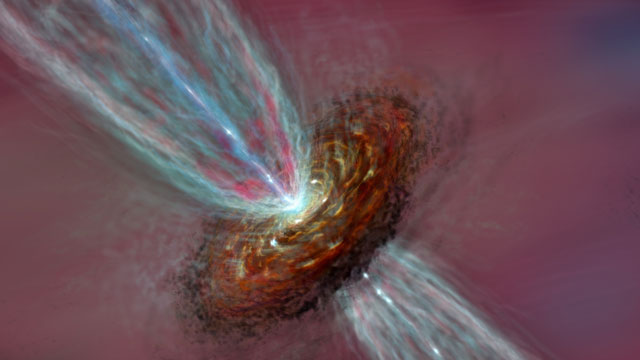ALMA discovers the new tool to explore baby stars: a new water maser emission in the Orion Nebula
| Science
A research team lead by Assistant Professor Tomoya Hirota (NAOJ) successfully detected maser emission from a water molecule in a high energy state using the ALMA. The water molecule was identified in radio source I of Orion KL, a newly-born star in the Orion Nebula. This research is the first to detect an H2O maser in a high energy state in a newly-formed star. These research results may not have been achieved without the first-ever highest sensitivity and imaging capability of the ALMA. It brings us a new method to observe high temperature gas. For example, even a gas disk or a high speed jet very close to a newly-born star can be observed.
In the near future, it is planned for the ALMA to be able to capture astronomical images at 50-times higher resolution than existing systems. This will enable observation of H2O masers in a high energy state. That will allow us to know the characteristics of Orion KL, and to capture detailed images of gas disks around it and of high speed jets emitted from it. Progress is also expected in elucidating the mystery of how a star is born.
This research is reported in the paper “The first detection of the 232 GHz vibrationally excited H2O maser in Orion KL with ALMA” by Hirota et al. appeared in The Astrophysical Journal Letters 757, L1.
The research team is composed of T. Hirota, M.-K. Kim, and M. Honma (Mizusawa VLBI Observatory, National Astronomical Observatory of Japan).
This study is partly supported by the JSPS Grant-in-Aid for Young Scientists (A) (24684011).
